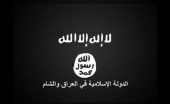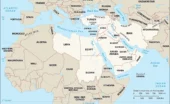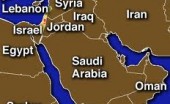Molly Minturn - My family is heartbroken to share that my father died in surgery on Monday, Feb. 10. It…
Positive Signs in Iraq — Stratfor
Written by Diana Thebaud Nicholson // November 13, 2007 // Geopolitics, Middle East & Arab World // Comments Off on Positive Signs in Iraq — Stratfor
Iraq: Positive Signs
November 13, 2007 2036
By George Friedman
The latest reports concerning the war in Iraq suggest the situation is looking up for the United States. First, U.S. military and Iraqi civilian casualties continue to fall. Second, there are confirmed reports that Sunni insurgents controlled by local leaders have turned on al Qaeda militants, particularly those from outside the country. Third, the head of U.S. Central Command, in an interview with the Financial Times, implied that an attack against Iran is a distant possibility.
It is tempting to say the United States has turned the corner on the war. The temptation might not be misplaced, but after many disappointments since 2003, it is prudent to be cautious in declaring turning points — and it is equally prudent not to confuse a turning point with a victory. That said, given expectations that the United States would be unable to limit violence in Iraq, and that Sunni insurgents would remain implacable — not to mention the broad expectation of a U.S. attack against Iran — these three points indicate a reversal — and must be taken seriously.
The most startling point is the decline in casualties, and particularly the apparent decline in sectarian violence. Explaining this is difficult. It could simply be the result of the more efficient use of U.S. troops in suppressing the insurgency and controlling the Shiite militias. If that were the only explanation, however, it would be troubling. Standard guerrilla warfare doctrine holds that during periods of intense enemy counterinsurgency operations, guerrillas should cease fighting, hide weapons and equipment and blend into the civilian population. Only after the enemy shifts its area of operations or reduces operational tempo should the guerrillas resume combat operations. Under no circumstances should insurgents attempt to fight a surge.
Therefore, if we were considering U.S. military operations alone, few conclusions could be drawn until after the operations shifted or slowed. In addition, in a country of 25 million, the expectation that some 167,000 troops — many of them not directly involved in combat — could break the back of an entrenched insurgency is optimistic. The numbers simply don’t work, particularly when Shiite militias are added to the equation. Therefore, if viewed simply in terms of military operations, the decline in casualties would not validate a shift in the war until much later, and our expectation is that the insurgency would resume prior levels of activity over time.
What makes the situation more hopeful for the United States is the clear decline in civilian casualties. Most of those were caused not by U.S. combat operations but by sectarian conflict, particularly between Sunnis and Shia. Part of the decline can be explained by U.S. operations, but when we look at the scope and intensity of sectarian fighting, it is difficult to give U.S. operations full credit. A more likely explanation is political, a decision on the part of the various sectarian organizations to stop operations not only against the Americans but also against each other. More



